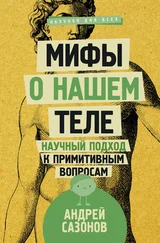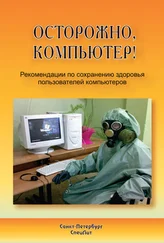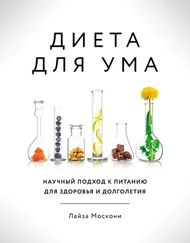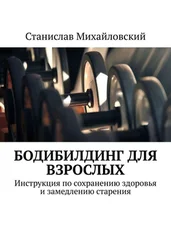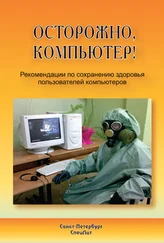3. Alexander B. K., Beyerstein B. L., Hadaway P. F., Coambs R. B. Effect of early and later colony housing on oral ingestion of morphine in rats. Pharmacol Biochem Behav. 1981 Oct;15(4):571–6. doi: 10.1016/0091–3057(81)90211–2. PMID: 7291261.
4. Morrison C. M., Gore H. The Relationship between Excessive Internet Use and Depression: A Questionnaire-Based Study of 1,319 Young People and Adults. Psychopathology 2010;43:121–126. doi: 10.1159/000277001.
5. Mason S. M., Flint A. J., Roberts A. L., Agnew-Blais J., Koenen K. C., Rich-Edwards J. W. Posttraumatic stress disorder symptoms and food addiction in women by timing and type of trauma exposure. JAMA Psychiatry. 2014;71(11):1271–1278. doi: 10.1001/jamapsychiatry.2014.1208.
6. National Institute on Drug Abuse (NIDA). Understanding Drug Use and Addiction DrugFacts. Published 2018 June. https://www.drugabuse.gov/publications/drugfacts/understanding-drug-use-addiction.
7. Treatment 4 Addiction. An American Addiction Centers Resource. https://americanaddictioncenters.org/.
8. Li Y., Schoufour J., Wang D. D., Dhana K., Pan A., Liu X., et al. Healthy lifestyle and life expectancy free of cancer, cardiovascular disease, and type 2 diabetes: prospective cohort study. BMJ. 2020 Jan 8;368: l6669. doi: 10.1136/bmj.l6669. PMID: 31915124; PMCID: PMC7190036.
Часть IV. Социальная среда
Глава 1. Социальные связи и здоровье
1. Leonard A. Moai — This tradition is Why Okinawan People Live Longer, Better. Blue Zones. https://www.bluezones.com/2018/08/moai-this-tradition-is-why-okinawan-people-live-longer-better/#:~:text=Elders%20in%20Okinawa%2C%20Japan%2C%20one, and%20extend%20into%20the%20100s.&text=Some%20moais%20have%20lasted%20over%2090%20years.
2. Barak Y., Leitch S., Glue P. (2020). The Great Escape. Centenarians’ exceptional health. Aging Clinical and Experimental Research. doi: 10.1007/s40520–020–01552-w.
3. Schnall S., Harber K. D., Stefanucci J. K., Proffitt D. R. Social support and the perception of geographical slant. Journal of Experimental Social Psychology. Volume 44, Issue 5. 2008. Pages 1246–1255. doi: 10.1016/j.jesp.2008.04.011. Science Direct. http://www.sciencedirect.com/science/article/pii/S002210310800070X.
4. Smith T. W., Ruiz J. M., Cundiff J. M., Baron K. G., Nealey-Moore J. B. Optimism and Pessimism in Social Context: An Interpersonal Perspective on Resilience and Risk. J Res Pers. 2013;47(5):553–562. doi: 10.1016/j.jrp.2013.04.006.
5. Heinonen K., Räikkönen K., Scheier M., Pesonen A.-K., Keskivaara P., Järvenpää A.-L., Strandberg T. (2006). Parents’ optimism is related to their ratings of their children’s behavior. European Journal of Personality. 20. 421–445. doi: 10.1002/per.601.
6. Murphy M. Optimistic employees are 103 % more inspired to give their best effort at work, new data reveals. Forbes. Feb 26, 2020. https://www.forbes.com/sites/markmurphy/2020/02/26/optimistic-employees-are-103-more-inspired-to-give-their-best-effort-at-work-new-data-reveals/?sh=6e53ee7a7afc.
7. Fowler J. H., Christakis N. A. Dynamic spread of happiness in a large social network: longitudinal analysis over 20 years in the Framingham Heart Study. BMJ. 2008 Dec 4;337: a2338. doi: 10.1136/bmj.a2338. PMID: 19056788; PMCID: PMC2600606.
8. Sommerlad A., Sabia S., Singh-Manoux A., Lewis G., Livingston G. (2019) Association of social contact with dementia and cognition: 28-year follow-up of the Whitehall II cohort study. PLoS Med 16(8): e1002862. doi: 10.1371/journal.pmed.1002862.
9. Liu H., Zhang Z., Choi S. W., Langa K. M. Marital Status and Dementia: Evidence from the Health and Retirement Study. J Gerontol B Psychol Sci Soc Sci. 2020;75(8):1783–1795. doi: 10.1093/geronb/gbz087.
10. Santini Z. I., Jose P. E., Koyanagi A., Meilstrup C., Nielsen L., Madsen K. R., Koushede V . Formal social participation protects physical health through enhanced mental health: A longitudinal mediation analysis using three consecutive waves of the Survey of Health, Ageing and Retirement in Europe (SHARE). Social Science & Medicine, Volume 251, 2020, 112906, ISSN0277–9536. doi: 10.1016/j.socscimed.2020.112906. Science Direct. http://www.sciencedirect.com/science/article/pii/S0277953620301258.
11. Holt-Lunstad J., Smith T. B., Layton J. B. Social relationships and mortality risk: a meta-analytic review. PLoS Med. 2010 Jul 27;7 (7): e1000316. doi: 10.1371/journal.pmed.1000316. PMID: 20668659; PMCID: PMC2910600.
Глава 2. Последствия одиночества и социальной изоляции
1. Victor C., Qualter P., Barreto M. (2019). What is loneliness: insights from the BBC Loneliness experiment. Innovation in Aging. 3. S373-S373. doi: 10.1093/geroni/igz038.1366.
2. Cole S. W., Capitanio J. P., Chun K., Arevalo J. M., Ma J., Cacioppo J. T. Myeloid differentiation architecture of leukocyte transcriptome dynamics in perceived social isolation. Proc Natl Acad Sci U S A. 2015 Dec 8;112(49):15142–7. doi: 10.1073/pnas.1514249112. Epub 2015 Nov 23. PMID: 26598672; PMCID: PMC4679065.
3. Valtorta N. K., Kanaan M., Gilbody S., et al. Loneliness and social isolation as risk factors for coronary heart disease and stroke: systematic review and meta-analysis of longitudinal observational studies. Heart 2016;102:1009–1016.
4. Cacioppo J. T., Cacioppo S. Older adults reporting social isolation or loneliness show poorer cognitive function 4 years later. Evidence-Based Nursing 2014;17:59–60.
5. Eisenberger N. I. The neural bases of social pain: evidence for shared representations with physical pain. Psychosom Med. 2012;74(2):126–135. doi: 10.1097/PSY.0b013e3182464dd1.
6. Kaufman G. F., Libby L. K. Changing beliefs and behavior through experience-taking. J Pers Soc Psychol. 2012 Jul;103(1):1–19. doi: 10.1037/a0027525. Epub 2012 Mar 26. PMID: 22448888.
7. Cacioppo J., Adler A., Lester P., McGurk D., Thomas J., Chen H.-Y., Cacioppo S. (2015). Building social resilience in soldiers: A double dissociative randomized controlled study. Journal of personality and social psychology. 109. 90–105. doi: 10.1037/pspi0000022.
8. Carlton K. What is loneliness? UChicago Medicine. https://www.uchicagomedicine.org/forefront/health-and-wellness-articles/what-is-loneliness.
Глава 3. Как образование, доходы и работа влияют на продолжительность жизни
1. Pijoan-Mas J., Rios-Rull J.-V. Heterogeneity in expected longevities. Staff Report 471, Federal Reserve Bank of Minneapolis. 2012. IDEAS. https://ideas.repec.org/p/fip/fedmsr/471.html.
2. Framke E., Sørensen J. K., Andersen P. K., et al. Contribution of income and job strain to the association between education and cardiovascular disease in 1.6 million Danish employees. European Heart Journal, Volume 41, Issue 11, 14 March 2020. Pages 1164–1178. doi: 10.1093/eurheartj/ehz870.
3. Rius M. Educación = salud + longevidad. La Vanguardia. 14.09.2012. https://www.lavanguardia.com/estilos-de-vida/20120914/54349508785/educacion-salud-longevidad.html.
4. Там же.
5. Там же.
6. Cutler D., Lleras-Muney A. (2006). Education and Health: Evaluating Theories and Evidence. Making Americans Healthier: Social and Economic Policy as Health Policy. 12352. doi: 10.3386/w12352.
7. Araya R., Lewis G., Rojas G., et al. Education and income: which is more important for mental health. Journal of Epidemiology & Community Health 2003;57:501–505.
Читать дальше
Конец ознакомительного отрывка
Купить книгу
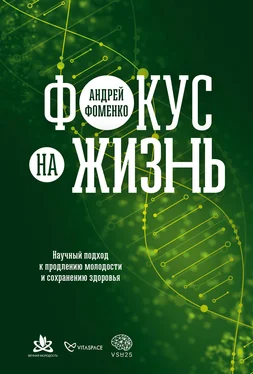

![Шон Янг - Привычки на всю жизнь [Научный подход к формированию устойчивых привычек]](/books/23939/shon-yang-privychki-na-vsyu-zhizn-nauchnyj-podhod-k-fo-thumb.webp)
